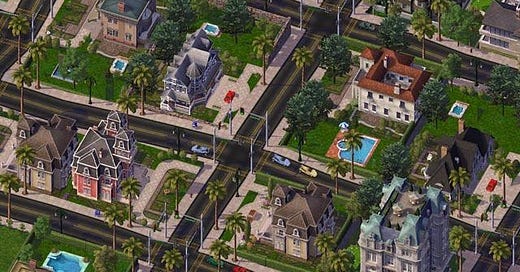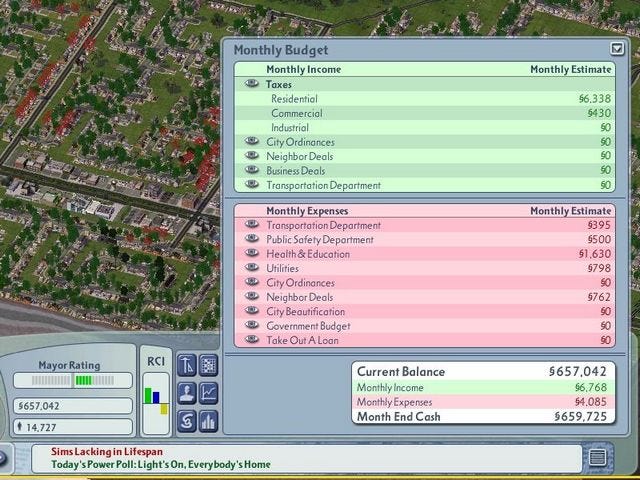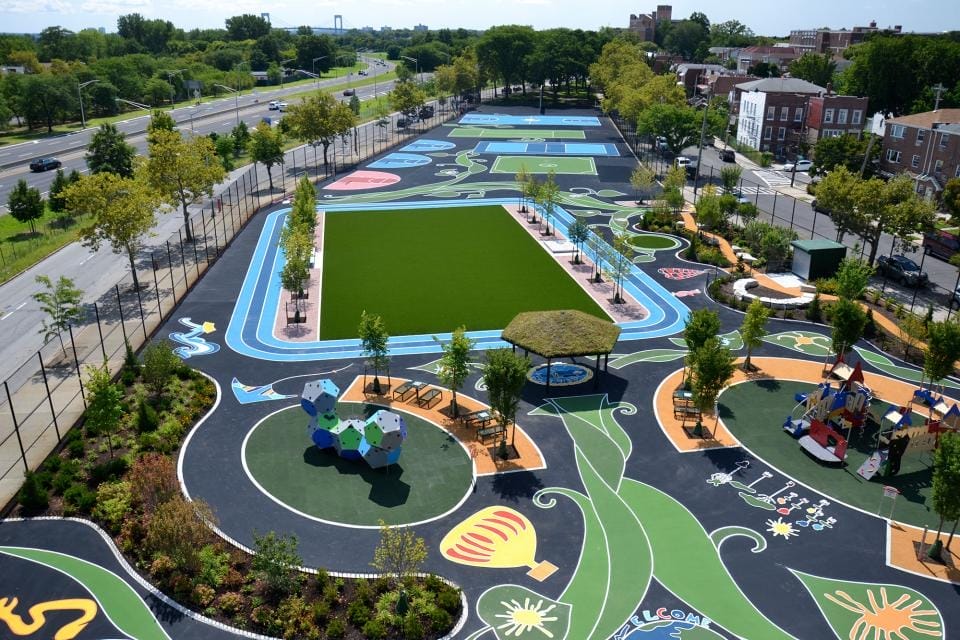SimCity Lessons for the Real World
How America’s obsession with building big and new leaves everything old to rot
I would always face bankruptcy playing SimCity 4 as a kid.
I’d plant parks on every corner, drop subway stations next to cul-de-sacs, and build fire stations on every street. Balancing what your city wants with what it can afford was hard, and once the money dried up, you had two choices: raise taxes or cut services.
Those shiny new parks and busy subway stations? They’d get neglected fast.
That’s exactly what’s happening in America today. The infrastructure we built over the last few decades, because we could, is now suffering from decades of deferred maintenance. It’s easy to fund a new road or public pool. But the cost to keep it in good shape? That’s tomorrow’s problem.
In the game, the first thing I’d cut was the parks budget. In real life, we do the same. The U.S. had a $65 billion municipal parks maintenance backlog in 2022. Our National Park System alone needs $22 billion in deferred repairs. Milwaukee County faces a $500 million park backlog. Texas: $800 million. New York City’s is likely in the billions.
And how we treat parks, especially public pools, says a lot about why our cities and towns keep sliding toward financial trouble.
1) We don’t do math
One huge problem in America: we always have money for new projects, but never for upkeep.
Chicago, for example, is on the brink of gutting transit service due to a massive operating deficit, yet the $5 billion Red Line extension keeps moving ahead. We love to cut the ribbon but forget about maintenance, depreciation, and the real long-term cost.


Look at Austin’s new pools this year at Colony Park and Givens District Park. Beautiful, popular, and politically easy to sell. The city’s budget is $1.4 billion, so $20 million for new pools seems minor. But operating them means hiring an additioanl six full-time staff and adding $1.5 million in annual costs, or $17.5 million more over the next decade, adjusted for inflation.
So that “$20 million pool” really costs $74.5 million over 25 years.
We build roads, transit lines, sewers, subdivisions, and bike trails the same way: fund it upfront, ignore the lifetime bill, and hope for the best.
2) We don’t know the difference between needs and wants
Ask anyone if we should have more parks and pools, and who’d say no? Shiny new projects are political gold. Voters love them. But needs and wants are not the same. We need to build what truly solves problems, not what looks nice on a campaign flier.
Instead, we need to focus on what we actually need and figure out what to build or implement to solve the problem. Do children in town have nothing to do after school? Do seniors face isolation issues in the community? Maybe we build a senior center within a park complex that addresses both needs.
Take these questions and see how a typical town would approve of them:
Are you in favor of a public pool?
Are you in favor of your tax dollars being spent on a public pool?
Are you in favor of your taxes going up $100 a year if it meant building and maintaining a public pool?
Are you in favor of your taxes going up $100 a year if it meant building and maintaining a public pool that you would also need to pay a daily or annual pass to use? (Means-based)
Approval probably drops from 90% on question 1 to 30% by question 4. But cities rarely have that honest conversation. They just build first, worry later. Austin has nearly four pools per 100,000 people (top 15 in the country), yet some areas lack access while others have multiple pools within walking distance. More isn’t always better; smarter is.
3) We are afraid to raise revenues
Only three states fully fund their highways and roads through driver fees. The other 47 rely on federal money to patch holes.
The federal gas tax hasn’t increased since 1993, even as we added 312,000 miles of new public roads. Electric cars and better fuel economy drain revenue even faster. Meanwhile, we keep building 10,000 miles of new roads every year with no clear plan for upkeep. Raising the gas tax or adding a mileage fee? “Political suicide.”
Napa, CA’s park system consists of 67 parks and recreational facilities, which account for over 800 acres of land. Facing a backlog of deferred maintenance, the city created a financial sustainability plan and realized that most of the subsidies for the park system were going to very specialized community classes that were exclusive and capped, which meant less money for services that were more broadly public.
The city separated all of the parks and recreation offerings, agreed to a subsidy level for each, and charged accordingly. Open parks and community events remain free and well-served, while capped fitness classes now charge a nominal fee.
The parks department now categorizes physical park project funding as:
Catch Up — return a physical asset to its former condition
Keep Up — maintain a physical asset in good, safe, and operable condition, extending its life to meet a defined level of service
Moving Forward — design and construct a new physical asset or parkland infrastructure to meet a new need, demand, or interest
Too many of our country’s projects are focused on “moving forward” without addressing the other two categories, and that’s why we are where we are.
We need to build trust
People don’t trust institutions anymore, partly because bad infrastructure proves the critics right. Every community deserves great parks, safe roads, good transit, and reliable schools. But focusing on the new shiny project while letting the old stuff rot breaks trust instead of earning it.
Ironically, our greatest civic spaces are parks. Central Park makes New York bearable. California’s public coastline is priceless. Amid daily life, these places offer fresh air, space for kids, and trails for walking the dog.
We need more great places, not just more stuff. We need to build what lasts and plan to keep it that way. And we need the courage to say yes to paying for it.
(A lot of this was inspired by a great talk at the Strong Towns 2025 conference by Jamie Sabbach from 110 percent firm)










In the US, our government and elected officials, local to federal level, aren’t in the business of solving problems. They are in the business of responding to problems in ways that can benefit those closest to them or whose support they need.
Building a pool is a 1 time project that can be contracted to a private company. Maintaining the pool is the responsibility of the responsibility of the city.
It’s really depressing and wasteful to watch.